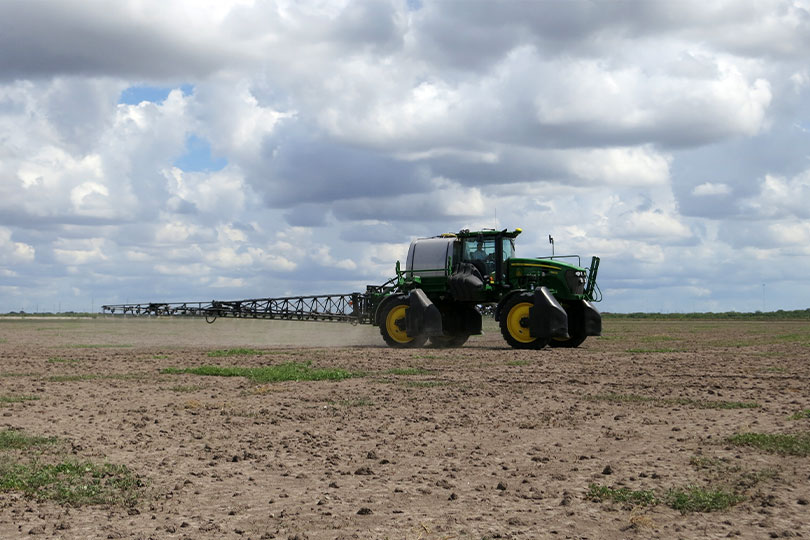By Tom Nicolette
Senior Network Producer
As hot, dry conditions persist across the Lone Star State, AgriLife Extension specialists have recommendations for farmers and ranchers applying pre- and post-emergence applications.
Herbicides are not as effective if the environment isn’t favorable for plant growth, so farmers may not get optimal weed control from the pre and post applications made this season.
Treating weeds or brush with a leaf spray application when temperatures are high will usually result in poor control, according to Dr. Vanessa Olson, forage specialist with Texas A&M AgriLife Extension Service in Overton.
“When temperatures exceed 90 degrees Fahrenheit, plants will slow down their growth and will not move the herbicide down to the roots. Additionally, insect damage this time of year decreases the amount of leaf available to take in the herbicide,” Olson said in a report on the Texas Farm Bureau Radio Network.
Hot temperatures also make leaves waxier, a trait used by plants to retain moisture, but will decrease the herbicide’s ability to move into the leaf.
“When spraying in high temperatures, time your application for early in the morning when temperatures are not as high. Never spray when temperatures exceed 90 degrees,” she said. “During morning hours, leaves will take in herbicides rapidly and translocate them to all areas of the plant,” Olson said.
Some herbicides are especially susceptible to volatilization. So, Olson noted care should be taken to protect desirable plants from accidental movement of the herbicide.
Ideal temperatures for applying most post-emergence herbicides are between 65 to 85 degrees.
Homeowners should follow similar recommendations for applying herbicides to their yards.
Refer to the product label for specific recommendations on herbicide usage during hot and dry conditions. Contact your local county AgriLife Extension agent for more information on herbicide recommendations for weed control.

